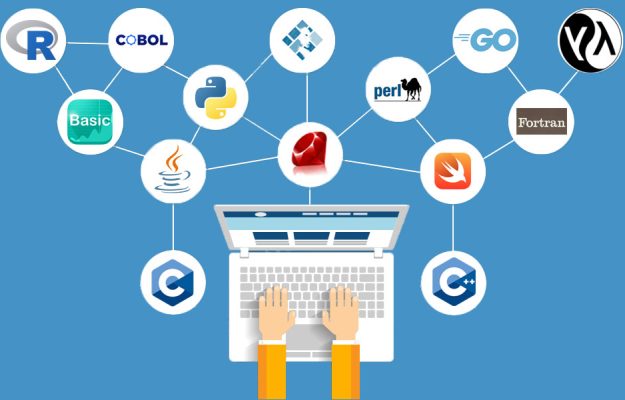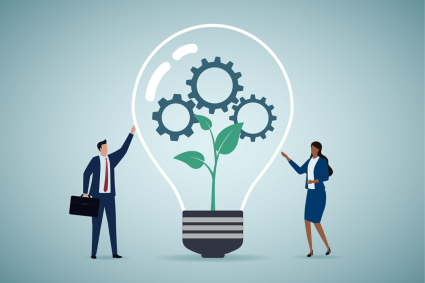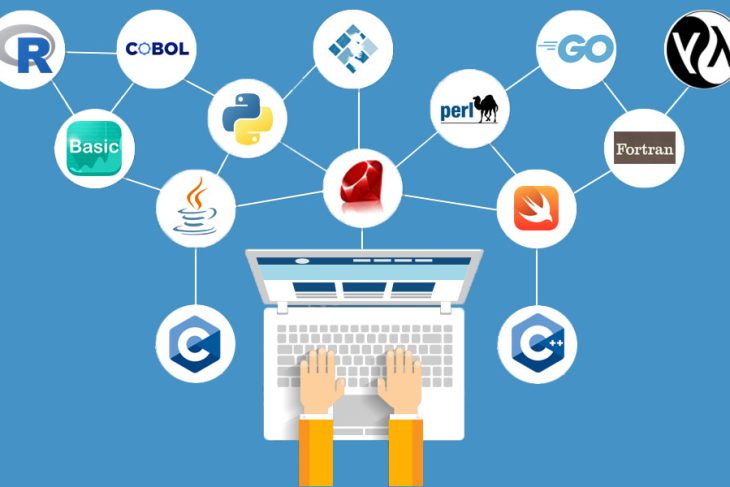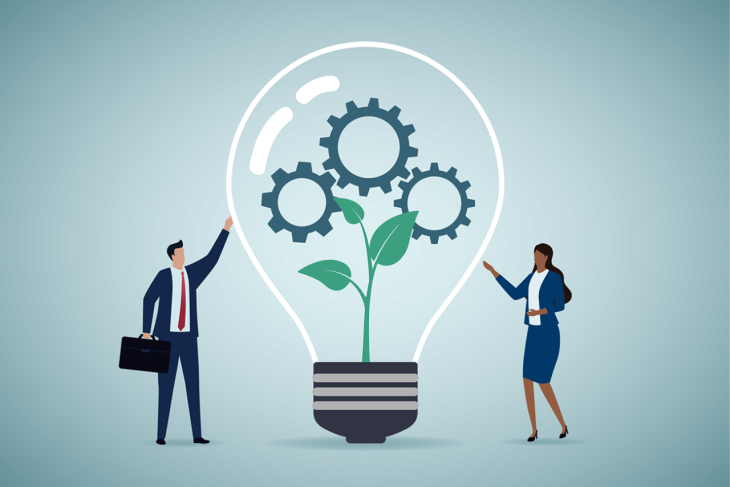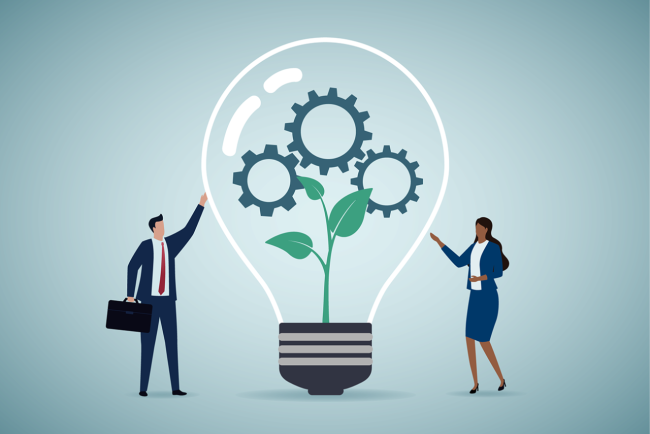

by admin
The Key Lessons Startups Should Take from Ringo Starr: Valuing Drummers over Lead Guitarists
In the world of startups, there is often a focus on the charismatic leaders and visionary founders who take center stage. However, there is much to be learned from the legendary Ringo Starr, the drummer of the iconic band, The Beatles. This article explores the […]
Startups
by admin
Soaring Towards the Future: The Impact of Drones on Retail, Cities, and Skies
As an internet information blogger, I am constantly amazed by the transformative power of technology. One innovation that has caught my attention in recent years is the rise of drones and their potential to revolutionize various aspects of our lives. From enhancing our retail experience […]
Industrial
by admin
Succeeding with a Lean Startup on a Shoestring Budget: Strategies for Success
Starting a business with limited funds can be challenging, but it’s not impossible. With the right approach and strategies, entrepreneurs can make their lean startups work even with minimal financial resources. In this article, we will explore effective ways to bootstrap your startup and achieve […]
Startups
by admin
Achieving Work-Life Balance in a Startup: 5 Strategies for Success
Working at a startup can be an exhilarating experience, but it often comes with long hours, high pressure, and a fast-paced environment. Finding a balance between work and personal life becomes crucial to avoid burnout and maintain overall well-being. In this article, we will explore […]
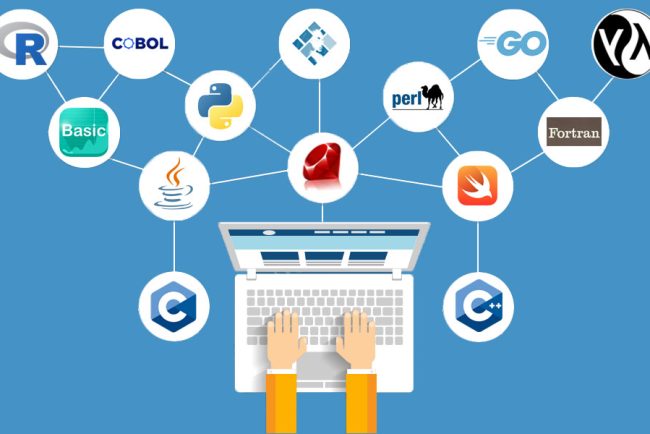
by admin
Exploring the Applications of Natural Language Processing (NLP) in Various Fields
As an Internet information blogger, I am fascinated by the potential of Natural Language Processing (NLP) and its impact on our daily lives. NLP is a technology that allows machines to understand and process human language, combining elements of linguistics, computer science, and artificial intelligence. […]
Industrial
by admin
The Transformation of Travel: Exploring the Impact of Connected Technology
In today’s digital age, connected technology is revolutionizing the way we travel. From planning our trips to navigating unfamiliar destinations, technology has become an integral part of our travel experiences. Let’s delve into how connected tech is changing the landscape of travel and enhancing our […]
Lifestyle
by admin
Exploring the Applications of Natural Language Processing (NLP) in Various Fields
As an Internet information blogger, I am fascinated by the potential of Natural Language Processing (NLP) and its impact on our daily lives. NLP is a technology that allows machines to understand and process human language, combining elements of linguistics, computer science, and artificial intelligence. […]
Industrial
by admin
The Transformation of Travel: Exploring the Impact of Connected Technology
In today’s digital age, connected technology is revolutionizing the way we travel. From planning our trips to navigating unfamiliar destinations, technology has become an integral part of our travel experiences. Let’s delve into how connected tech is changing the landscape of travel and enhancing our […]
Lifestyle
by admin
Building a Future-Ready Warehouse: Nurturing Connectivity and Automation
The concept of the warehouse of tomorrow represents a visionary approach to warehousing and distribution. It envisions warehouses designed with connectivity and automation at their core, promising enhanced efficiency and productivity in storage and fulfillment processes. To achieve this, companies need to focus on modernization […]
Industrial
by admin
Achieving Work-Life Balance in a Startup: 5 Strategies for Success
Working at a startup can be an exhilarating experience, but it often comes with long hours, high pressure, and a fast-paced environment. Finding a balance between work and personal life becomes crucial to avoid burnout and maintain overall well-being. In this article, we will explore […]
Startups
Mastering the Art of Work Calendar Management for Optimal Productivity
by admin
A well-structured work calendar is a powerful tool that can significantly enhance productivity and help individuals effectively manage their time. This article provides practical tips and strategies for creating an effective work calendar, enabling individuals to maximize their productivity and achieve their goals. Set Clear […]
Startups
A well-structured work calendar is a powerful tool that can significantly enhance productivity and help individuals effectively manage their time. This article provides practical tips and strategies for creating an effective work calendar, enabling individuals to maximize their productivity and achieve their goals.
- Set Clear Goals and Priorities: Before diving into calendar management, it is essential to establish clear goals and priorities. Identify the most important tasks and projects that align with your objectives. By having a clear understanding of your priorities, you can allocate the necessary time and resources in your work calendar.
- Use a Digital Calendar Tool: Utilizing a digital calendar tool, such as Google Calendar or Microsoft Outlook, can streamline the process of creating and managing your work calendar. These tools offer features like reminders, recurring events, and integration with other applications, making it easier to stay organized and keep track of your schedule.
- Block Dedicated Time for Focused Work: To boost productivity, it’s crucial to allocate dedicated time for focused work. Schedule blocks of uninterrupted time in your calendar for important tasks that require concentration. During these periods, eliminate distractions, such as email notifications or phone calls, to maintain focus and accomplish your work efficiently.
- Prioritize Important and Urgent Tasks: When planning your work calendar, prioritize tasks based on their importance and urgency. Important tasks contribute directly to your goals, while urgent tasks require immediate attention. By understanding the distinction between important and urgent, you can allocate your time effectively and avoid the trap of constantly firefighting urgent but less important tasks.
- Use Time Blocking Techniques: Time blocking is a popular technique that involves assigning specific time blocks for different types of activities or projects. For example, you can allocate time blocks for meetings, emails, creative work, and administrative tasks. This approach helps create a structured schedule and ensures that each aspect of your work receives dedicated attention.
- Allow Buffer Time and Flexibility: While it’s essential to create a structured work calendar, it’s equally important to allow buffer time and flexibility. Unexpected events, meetings running over time, or urgent tasks may arise throughout the day. By leaving some unallocated time slots or incorporating buffer time between activities, you can handle unforeseen situations without derailing your entire schedule.
- Review and Adjust Regularly: A work calendar is not set in stone. It requires regular review and adjustment to align with changing priorities and circumstances. Set aside time at the end of each day or week to evaluate your progress, assess upcoming tasks, and make necessary adjustments to optimize your calendar for the future.
- Communicate and Coordinate with Others: If you work in a team or collaborate with others, effective calendar management involves communication and coordination. Share your availability and important deadlines with colleagues, and use collaborative calendar tools to schedule meetings and appointments efficiently. Regular communication ensures everyone is on the same page and helps avoid scheduling conflicts.
Conclusion: Creating an effective work calendar is a valuable skill that can enhance productivity and time management. By setting clear goals, utilizing digital calendar tools, blocking dedicated time, prioritizing tasks, using time blocking techniques, allowing flexibility, and regularly reviewing and adjusting your calendar, you can optimize your work schedule and achieve optimal productivity. Remember, effective calendar management is a continuous process that requires proactive planning and adaptation.

by admin
Overhauling Product Strategy: A Crucial Step for Manufacturers
In today’s rapidly evolving market landscape, manufacturers are facing unprecedented challenges. Consumer demands are constantly changing, competition is intensifying, and technology is advancing at an exponential rate. In order to thrive in this dynamic environment, manufacturers must revamp their product strategies to stay ahead of […]
Industrial
In today’s rapidly evolving market landscape, manufacturers are facing unprecedented challenges. Consumer demands are constantly changing, competition is intensifying, and technology is advancing at an exponential rate. In order to thrive in this dynamic environment, manufacturers must revamp their product strategies to stay ahead of the curve.
A product strategy encompasses the decisions and actions taken by a company to develop and market its products effectively. It involves identifying target markets, understanding customer needs and preferences, conducting market research, and aligning product development with business objectives. By reevaluating and adjusting their product strategies, manufacturers can position themselves for success in the ever-changing market.
One key aspect of revamping product strategy is staying attuned to customer demands. Manufacturers must actively listen to their customers, conduct surveys, analyze feedback, and track market trends to gain insights into evolving consumer preferences. This customer-centric approach enables manufacturers to develop products that meet or exceed customer expectations, resulting in higher customer satisfaction and loyalty.
Furthermore, manufacturers need to embrace innovation and leverage emerging technologies. The rapid pace of technological advancements presents both challenges and opportunities. By embracing cutting-edge technologies such as artificial intelligence, Internet of Things (IoT), and data analytics, manufacturers can optimize their product development processes, enhance product features, and create new value propositions. Incorporating smart and connected features into products can also open doors to new business models and revenue streams.
Additionally, manufacturers should focus on sustainability and environmental considerations. With increasing awareness of environmental issues, consumers are demanding eco-friendly and sustainable products. By incorporating sustainable practices throughout the product lifecycle, such as using recycled materials, reducing energy consumption, and minimizing waste, manufacturers can attract environmentally conscious customers and differentiate themselves from competitors.
Furthermore, collaboration and partnerships are crucial for manufacturers looking to revamp their product strategies. By forging alliances with suppliers, distributors, and technology providers, manufacturers can access expertise, resources, and market insights that can accelerate their product development and go-to-market strategies. Collaborative efforts can also foster innovation and facilitate the adoption of new technologies, helping manufacturers stay ahead of the competition.
In conclusion, revamping product strategy is a necessity for manufacturers in today’s fast-paced and competitive market environment. By staying attuned to customer demands, embracing innovation, considering sustainability, and fostering collaborations, manufacturers can position themselves for success. Adapting to changing market dynamics and proactively adjusting product strategies will enable manufacturers to meet customer expectations, seize new opportunities, and drive growth in the digital era.

by admin
Safeguarding Smart Cities: The Importance of Cybersecurity Introduction:
Smart cities are on the rise, with innovative technologies being integrated into urban environments to enhance efficiency, sustainability, and quality of life. However, the rapid adoption of these technologies also brings forth significant cybersecurity risks. In this article, we will explore the crucial role of […]
Smart Cities
Smart cities are on the rise, with innovative technologies being integrated into urban environments to enhance efficiency, sustainability, and quality of life. However, the rapid adoption of these technologies also brings forth significant cybersecurity risks. In this article, we will explore the crucial role of cybersecurity in ensuring the sanity and security of smart cities.
The Growth of Smart Cities:
Smart cities utilize a network of interconnected devices, sensors, and systems to gather and analyze data in real-time, enabling city authorities to make informed decisions and deliver better services to residents. From smart transportation and energy management to efficient waste disposal and public safety, these advancements offer immense benefits. However, they also introduce vulnerabilities that can be exploited by cybercriminals.
The Risks of Insufficient Cybersecurity:
Without robust cybersecurity measures, smart cities are susceptible to various threats, including data breaches, privacy violations, and infrastructure disruptions. Cybercriminals can exploit vulnerabilities in connected devices and networks to gain unauthorized access to sensitive information or even control critical infrastructure. The consequences can range from financial losses and reputational damage to compromised public safety and citizen distrust.
Ensuring Cybersecurity in Smart Cities:
- Strong Network Protection: Smart cities rely on complex networks that require stringent security measures. Implementing firewalls, encryption protocols, and intrusion detection systems can help prevent unauthorized access and protect data transmission. Regular network audits and updates are essential to address vulnerabilities and stay ahead of emerging threats.
- Robust Data Encryption: As smart cities collect and analyze vast amounts of data, it is crucial to encrypt this information both in transit and at rest. Encryption ensures that even if data is intercepted, it remains unreadable to unauthorized parties. Adopting strong encryption algorithms and secure key management practices is vital for safeguarding sensitive data.
- Multi-Layered Authentication: Implementing multi-factor authentication mechanisms adds an extra layer of security to smart city systems. Strong passwords, biometric authentication, and token-based verification can help prevent unauthorized access and identity theft. User awareness and education about cybersecurity best practices are also essential in maintaining a secure environment.
- Real-Time Threat Monitoring: Continuous monitoring and analysis of network traffic and system logs enable early detection of potential security breaches. Implementing security information and event management (SIEM) solutions can help identify suspicious activities, trigger alerts, and enable rapid incident response.
- Collaboration and Standards: Collaboration among stakeholders, including city authorities, technology providers, and cybersecurity experts, is vital for developing and implementing cybersecurity standards and best practices. Regular audits, security assessments, and penetration testing can identify vulnerabilities and ensure compliance with established security guidelines.
Conclusion:
As smart cities continue to evolve, cybersecurity must be a top priority. By implementing strong network protection, robust data encryption, multi-layered authentication, real-time threat monitoring, and promoting collaboration and standards, smart cities can mitigate cybersecurity risks and ensure the sanity and security of their infrastructure and citizens. Proactive cybersecurity measures are essential for building trust, protecting critical systems, and enabling the full potential of smart city technologies.

by admin
Exploring Strategies to Preserve Tech Workforce Stability Amidst Challenges
In times of economic uncertainty, layoffs are often seen as a common solution for businesses looking to cut costs. However, in the tech industry, where skilled talent is in high demand, companies are seeking alternatives to layoffs to maintain a stable and productive workforce. This […]
Startups
In times of economic uncertainty, layoffs are often seen as a common solution for businesses looking to cut costs. However, in the tech industry, where skilled talent is in high demand, companies are seeking alternatives to layoffs to maintain a stable and productive workforce. This article delves into various strategies that tech companies can consider as alternatives to layoffs, highlighting the benefits they offer in preserving workforce stability during challenging times.
- Implementing Flexible Work Arrangements: One effective alternative to layoffs is implementing flexible work arrangements. This can include options such as reduced work hours, part-time schedules, or job-sharing programs. By allowing employees to adjust their work schedules, companies can reduce costs while retaining valuable talent. Flexible work arrangements also contribute to employee satisfaction and work-life balance, leading to increased productivity and loyalty.
- Encouraging Voluntary Unpaid Leave: Offering voluntary unpaid leave can be an attractive option for employees who may be willing to take temporary time off to support the company during challenging periods. This arrangement allows employees to maintain their connection to the company while alleviating financial pressure. By providing this option, businesses can minimize layoffs and retain skilled workers for future projects when the situation improves.
- Retraining and Upskilling Programs: Investing in retraining and upskilling programs for employees can help retain talent while adapting to changing market demands. By identifying skills gaps and providing training opportunities, companies can equip their workforce with new capabilities, ensuring they remain relevant and valuable to the organization. Retraining programs not only benefit individual employees but also contribute to the long-term growth and competitiveness of the company.
- Internal Mobility and Job Redeployment: During challenging times, companies can explore internal mobility and job redeployment as alternatives to layoffs. By assessing the skills and interests of employees, businesses can match them with available positions within the organization, even if they are in different departments or roles. This approach not only helps retain talent but also fosters a culture of agility and adaptability within the company.
- Implementing Short-Term Salary Reductions: Instead of layoffs, some companies opt for temporary salary reductions as a means to mitigate financial challenges. This approach allows businesses to maintain their workforce while reducing overall costs. To ensure fairness and transparency, it is crucial to communicate openly with employees about the temporary nature of the salary reduction and the plans for eventual recovery.
- Engaging in Client and Project Diversification: To maintain a stable workforce, tech companies can explore diversifying their client base and project portfolio. By expanding into new markets or industries, businesses can reduce their dependence on a single client or project. This diversification strategy provides stability by spreading the risk and creating a more resilient business model, thereby reducing the need for layoffs during challenging times.
Conclusion: Layoffs can have a detrimental impact on both businesses and employees, particularly in the tech industry where talent is highly sought after. By considering alternative strategies such as implementing flexible work arrangements, voluntary unpaid leave, retraining programs, internal mobility, short-term salary reductions, and client/project diversification, tech companies can preserve workforce stability and navigate challenging economic conditions. It is essential for organizations to prioritize the well-being of their employees while ensuring the long-term sustainability and success of their business.

by admin
Launching Your Own Business: A Guide to Entrepreneurship While Living With Your Parents
Starting a business is an exciting endeavor that often requires dedication, hard work, and financial resources. However, many aspiring entrepreneurs face the challenge of limited funds, making it difficult to secure their own place to live. But living with your parents shouldn’t deter you from […]
Lifestyle
Starting a business is an exciting endeavor that often requires dedication, hard work, and financial resources. However, many aspiring entrepreneurs face the challenge of limited funds, making it difficult to secure their own place to live. But living with your parents shouldn’t deter you from pursuing your entrepreneurial dreams. In fact, it can provide certain advantages and opportunities. In this article, we will explore how you can successfully start a business while living with your parents.
- Clear Communication: Before embarking on your entrepreneurial journey, have an open and honest conversation with your parents about your plans. Explain your vision, goals, and the steps you will take to ensure minimal disruption to their daily lives. Discuss expectations, boundaries, and any financial contributions you may need from them.
- Financial Planning: Develop a comprehensive business plan that includes financial projections, funding requirements, and strategies for generating revenue. This will demonstrate your seriousness and dedication to your parents. Consider alternative funding options such as small business loans, crowdfunding, or seeking investments from friends and family.
- Utilize Available Resources: Living with your parents means you can take advantage of various resources without incurring additional costs. Use the space in your home to set up a home office or workspace. Utilize existing utilities, internet connections, and equipment to keep your overhead costs low.
- Time Management: Starting a business requires effective time management. Create a schedule that allows you to balance your business responsibilities with your obligations at home. Communicate your work hours to your family, ensuring they understand when you need uninterrupted time to focus on your business.
- Leverage Support: Living with your parents provides a built-in support system. Seek their advice, guidance, and feedback on your business ideas and strategies. Their experience and wisdom can be invaluable assets as you navigate the challenges of entrepreneurship. Additionally, consider joining local entrepreneurial communities or seeking mentorship from experienced professionals in your industry.
- Maintain a Professional Image: Even though you are working from home, it’s essential to maintain a professional image. Dress appropriately, establish a dedicated workspace, and set clear boundaries with family members regarding interruptions during working hours. This will help you stay focused and maintain a productive work environment.
- Show Progress and Success: As you make progress in your business, share your achievements with your parents. Demonstrate your dedication and hard work by showcasing milestones, positive customer feedback, or revenue growth. This will help build confidence and support from your family.
Living with your parents while starting a business can provide a stable foundation and financial flexibility. However, it’s crucial to approach it with respect, clear communication, and a proactive mindset. With careful planning, dedication, and the support of your family, you can turn your entrepreneurial aspirations into a successful reality.

by admin
Thriving Startup Hubs: Top Destinations for Entrepreneurs in 2023
As the startup ecosystem continues to evolve, certain cities around the world have established themselves as ideal destinations for entrepreneurs. These startup capitals offer a combination of infrastructure, resources, and supportive communities that foster innovation and growth. In this article, we will explore some of […]
Startups
As the startup ecosystem continues to evolve, certain cities around the world have established themselves as ideal destinations for entrepreneurs. These startup capitals offer a combination of infrastructure, resources, and supportive communities that foster innovation and growth. In this article, we will explore some of the best startup cities for entrepreneurs in 2023, highlighting their unique characteristics and opportunities.
- Silicon Valley, United States: Silicon Valley has long been regarded as the epitome of startup success. With its concentration of top-tier universities, venture capital firms, and tech giants, it remains a magnet for entrepreneurs. The region’s ecosystem provides access to experienced mentors, networking opportunities, and a culture that celebrates risk-taking. Although the cost of living is high, the potential for collaboration and access to capital make Silicon Valley an attractive choice for startups.
- Tel Aviv, Israel: Dubbed the “Startup Nation,” Tel Aviv has emerged as a global hub for innovation. The city’s entrepreneurial spirit, coupled with government support and a robust tech ecosystem, has contributed to its success. Tel Aviv boasts a high concentration of startups, research institutions, and venture capital funding. It also benefits from a diverse talent pool, drawn from Israel’s renowned military intelligence units and world-class universities.
- London, United Kingdom: London has established itself as a thriving startup capital in Europe. The city’s vibrant tech scene, cultural diversity, and access to global markets make it an attractive destination for entrepreneurs. London offers a strong support system with numerous incubators, accelerators, and co-working spaces. Additionally, initiatives like Tech City UK and London Tech Week showcase the city’s commitment to nurturing and promoting startups.
- Berlin, Germany: Berlin has emerged as a major player in the European startup landscape. The city’s affordable living costs, vibrant arts and culture scene, and entrepreneurial-friendly policies have drawn a wave of startups. Berlin’s ecosystem is known for its collaborative spirit and strong emphasis on sustainability and social impact. The city also hosts several startup events, such as Tech Open Air and Berlin Startup Night, providing ample networking opportunities.
- Singapore: Singapore has rapidly gained recognition as a startup hub in Asia. The city-state’s strategic location, strong government support, and well-developed infrastructure make it an ideal base for entrepreneurs. Singapore offers access to regional markets, a favorable business environment, and a vibrant startup community. The government’s initiatives, such as the Startup SG program and co-working spaces like Block71, contribute to the city’s thriving startup ecosystem.
Conclusion: For entrepreneurs seeking to establish or grow their startup ventures, these top startup capitals provide a fertile ground for success. Each city offers unique advantages, ranging from access to venture capital and talent, to supportive communities and government initiatives. However, it is crucial for entrepreneurs to consider their specific needs, industry focus, and market opportunities when selecting a startup destination. By tapping into these thriving startup hubs, entrepreneurs can leverage the resources and networks available to drive innovation, growth, and global impact.

by admin
Unlocking the Future: Five Small Actions to Future-Proof Your City
As cities around the world face the challenges of rapid urbanization and technological advancements, the concept of future-proofing has gained significant importance. Future-proofing involves taking proactive measures to ensure cities can adapt and thrive in the face of changing circumstances. While large-scale initiatives often grab […]
Smart Cities
As cities around the world face the challenges of rapid urbanization and technological advancements, the concept of future-proofing has gained significant importance. Future-proofing involves taking proactive measures to ensure cities can adapt and thrive in the face of changing circumstances. While large-scale initiatives often grab the spotlight, small but impactful actions can also contribute to future-proofing a city. In this article, we explore five such actions that can help unlock a city’s potential for the future.
- Embrace Sustainable Transportation:
One of the key aspects of future-proofing a city is promoting sustainable transportation options. Encouraging the use of bicycles, implementing pedestrian-friendly infrastructure, and expanding public transportation networks can reduce congestion, lower emissions, and improve the overall quality of life. Investing in smart transportation technologies, such as electric vehicle charging stations and intelligent traffic management systems, can also contribute to a greener and more efficient urban environment.
- Foster Innovation and Entrepreneurship:
Cities that foster innovation and entrepreneurship are better positioned to adapt to evolving economic trends and technological advancements. Creating supportive ecosystems for startups and small businesses can fuel economic growth and attract talent. Initiatives such as startup incubators, co-working spaces, and innovation hubs provide platforms for collaboration, knowledge sharing, and the development of cutting-edge solutions. By nurturing a culture of innovation, cities can remain competitive and resilient in a rapidly changing world.
- Prioritize Digital Infrastructure:
The digital revolution is transforming various aspects of urban life, from communication and transportation to healthcare and governance. Future-proof cities prioritize the development of robust digital infrastructure to support these advancements. High-speed internet connectivity, smart city platforms, and open data initiatives can facilitate the integration of digital technologies and enhance the delivery of public services. By embracing the digital transformation, cities can improve efficiency, empower citizens, and create new opportunities for growth.
- Enhance Resilience and Adaptability:
Future-proofing involves preparing cities to withstand and recover from various challenges, including natural disasters, climate change, and economic disruptions. Investing in resilient infrastructure, implementing disaster preparedness plans, and incorporating sustainable practices can enhance a city’s ability to bounce back and adapt to changing circumstances. By embracing sustainable building designs, green infrastructure, and climate mitigation strategies, cities can minimize risks and create a safer and more sustainable environment for their residents.
- Engage the Community:
The active involvement of the community is vital for future-proofing a city. Engaging citizens in decision-making processes, seeking their input, and encouraging participation in community initiatives fosters a sense of ownership and collective responsibility. Collaborative platforms, citizen feedback mechanisms, and participatory budgeting can empower residents to contribute their ideas, insights, and skills towards building a better future. By nurturing strong community bonds, cities can tap into the collective intelligence and creativity of their residents, leading to innovative solutions and inclusive growth.
Conclusion:
Future-proofing a city is not solely reliant on grand gestures or massive infrastructure projects. Small, deliberate actions can have a significant impact on a city’s ability to adapt, innovate, and thrive in the face of an ever-changing future. By embracing sustainable transportation, fostering innovation, prioritizing digital infrastructure, enhancing resilience, and engaging the community, cities can unlock their full potential and create a future that is sustainable, inclusive, and prosperous.

by admin
Embracing Smart Technology: Making Every House a Home
In today’s rapidly advancing technological landscape, smart homes have gained significant popularity. The integration of smart devices and automation systems has transformed houses into intelligent living spaces. This article explores the concept of smart homes and how they have revolutionized the idea of home, making […]
Smart Cities
In today’s rapidly advancing technological landscape, smart homes have gained significant popularity. The integration of smart devices and automation systems has transformed houses into intelligent living spaces. This article explores the concept of smart homes and how they have revolutionized the idea of home, making it a more convenient, efficient, and connected environment.
The Rise of Smart Homes:
Smart homes refer to residences equipped with connected devices and systems that can be controlled and monitored remotely. These devices, often interconnected through the Internet of Things (IoT), offer a wide range of features and functionalities, enhancing comfort, convenience, security, and energy efficiency within households.
Convenience and Control:
One of the primary benefits of smart homes is the convenience they provide. Through smart devices such as voice assistants, smartphones, and tablets, homeowners can control various aspects of their houses, including lighting, temperature, security systems, and entertainment devices. This level of control allows individuals to customize their living environments according to their preferences and schedules.
Energy Efficiency:
Smart homes also contribute to energy efficiency, promoting sustainability and cost savings. Smart thermostats can learn residents’ habits and adjust temperature settings accordingly, optimizing energy consumption. Automated lighting systems can turn off lights in unoccupied rooms, reducing unnecessary energy usage. These energy-saving features not only benefit the environment but also help homeowners lower their utility bills.
Enhanced Security:
Smart home security systems offer advanced features to protect households from potential threats. Video doorbells allow homeowners to see and communicate with visitors remotely, increasing security and deterring potential intruders. Motion sensors, door/window sensors, and smart locks provide additional layers of security, enabling homeowners to monitor and control access to their homes from anywhere.
Connected Living:
Smart homes promote connected living by integrating various devices and systems. Home automation hubs act as central control units, allowing homeowners to manage and coordinate multiple smart devices seamlessly. This interconnectedness enhances the overall user experience, creating a cohesive ecosystem where devices work in harmony to meet the residents’ needs.
The Personalization Factor:
Another aspect that makes smart homes unique is the ability to personalize the living space. Smart devices can learn residents’ preferences and adapt accordingly. For example, smart lighting systems can adjust brightness and color temperature to create the desired ambiance. Smart speakers can curate personalized playlists based on individual music preferences. These personalized touches create a sense of comfort and familiarity within the home.
Conclusion:
Smart homes have revolutionized the concept of home, offering convenience, energy efficiency, enhanced security, and connected living experiences. With the proliferation of smart devices and IoT technology, homeowners can transform any house into a smart home, tailored to their unique needs and preferences. Embracing smart technology not only makes homes more intelligent but also creates a welcoming and comfortable environment where residents can truly feel at home.

by admin
Unlocking the Future: Addressing the Data Problem that Hinders Progress
In today’s rapidly evolving digital landscape, data has emerged as a critical asset driving innovation, decision-making, and progress across various industries. However, many organizations are facing significant challenges in effectively managing and leveraging their data. This article explores the implications of the data problem and […]
Smart Cities
In today’s rapidly evolving digital landscape, data has emerged as a critical asset driving innovation, decision-making, and progress across various industries. However, many organizations are facing significant challenges in effectively managing and leveraging their data. This article explores the implications of the data problem and emphasizes the need for proactive measures to overcome this hurdle and unlock the full potential of the future.
The Data Problem:
The data problem refers to the difficulties and obstacles organizations encounter in handling and utilizing their data effectively. It encompasses several key issues that hinder progress and innovation:
- Data Silos and Fragmentation:
One major aspect of the data problem is the existence of data silos within organizations. Data silos occur when data is stored and managed in isolated systems or departments, making it challenging to access and integrate information from different sources. This fragmentation prevents organizations from obtaining a holistic view of their data and limits their ability to extract valuable insights.
- Data Quality and Accuracy:
Another significant challenge is ensuring the quality and accuracy of data. Inaccurate or incomplete data can lead to flawed analyses and decision-making. Data must undergo thorough validation, cleansing, and quality checks to ensure its reliability and usefulness. Without reliable data, organizations may make flawed business decisions that can impede progress.
- Data Privacy and Security:
As the volume of data increases, ensuring data privacy and security becomes paramount. Organizations must prioritize protecting sensitive information and complying with data protection regulations. Data breaches not only compromise individuals’ privacy but also erode public trust in organizations, hindering their ability to leverage data for future advancements.
- Data Literacy and Skills Gap:
The data problem is further exacerbated by a lack of data literacy and a skills gap within organizations. Many employees may struggle to understand and interpret data effectively, limiting their ability to derive insights and make informed decisions. Organizations must invest in training and upskilling their workforce to bridge this gap and foster a data-driven culture.
Addressing the Data Problem:
To unlock the future and harness the power of data, organizations must take proactive steps to address the data problem:
- Data Integration and Collaboration:
Breaking down data silos and promoting cross-functional collaboration is crucial. Organizations should invest in robust data integration strategies and technologies that enable seamless data sharing and collaboration across departments. This approach fosters a unified view of data and facilitates more comprehensive analysis and decision-making.
- Data Governance and Quality Management:
Establishing robust data governance frameworks is essential to ensure data quality, accuracy, and consistency. Organizations should implement standardized processes for data collection, storage, and maintenance. Regular audits and quality checks should be performed to identify and rectify any data issues promptly.
- Privacy and Security Measures:
Organizations must prioritize data privacy and security by implementing robust security protocols, encryption techniques, and access controls. Regular assessments and audits should be conducted to identify vulnerabilities and ensure compliance with relevant regulations.
- Data Literacy and Training:
Investing in data literacy programs and training initiatives is crucial to empower employees with the necessary skills to work with data effectively. Providing resources and support for upskilling enables individuals to derive insights, make data-driven decisions, and contribute to overall organizational success.
Conclusion:
The data problem poses significant challenges to organizations aiming to embrace the future and leverage the full potential of data-driven innovation. By addressing issues such as data silos, data quality, privacy, and skills gaps, organizations can unlock the transformative power of data. With a strategic approach to data management, organizations can make informed decisions, drive innovation, and propel themselves forward in an increasingly data-centric world.

by admin
Guarding Against Vendor Impersonation: The Role of Financial Automation
Vendor impersonation is a growing concern for businesses, with cybercriminals targeting organizations to steal sensitive financial information or deceive them into making fraudulent payments. As technology evolves, so do the tactics used by these criminals. However, financial automation can play a crucial role in protecting […]
Startups
Vendor impersonation is a growing concern for businesses, with cybercriminals targeting organizations to steal sensitive financial information or deceive them into making fraudulent payments. As technology evolves, so do the tactics used by these criminals. However, financial automation can play a crucial role in protecting businesses from vendor impersonation. In this article, we will explore how financial automation can safeguard organizations and mitigate the risks associated with vendor impersonation.
Understanding Vendor Impersonation: Vendor impersonation occurs when cybercriminals pose as legitimate vendors or suppliers to deceive businesses into providing sensitive financial information or making fraudulent payments. These impersonators may use various tactics, including email spoofing, phishing scams, and social engineering, to gain the trust of unsuspecting employees. The consequences can be severe, resulting in financial losses, reputational damage, and legal implications.
The Role of Financial Automation: Financial automation refers to the use of technology to streamline and optimize financial processes, including accounts payable and vendor management. It offers several key benefits in the fight against vendor impersonation:
- Enhanced Security Measures: Financial automation platforms often include robust security features designed to protect against fraud and unauthorized access. These may include multi-factor authentication, encryption, and secure data transmission protocols. By leveraging these security measures, businesses can significantly reduce the risk of vendor impersonation attempts.
- Approval Workflow Controls: Financial automation systems provide configurable approval workflows, ensuring that payments and sensitive financial information go through appropriate authorization channels. This helps prevent unauthorized individuals from manipulating or approving fraudulent transactions. By implementing a clear and secure approval process, businesses can detect and mitigate potential vendor impersonation incidents.
- Supplier Verification and Validation: Financial automation tools can integrate with external data sources and databases to verify the authenticity of vendors and suppliers. This involves cross-referencing vendor information against trusted sources and conducting due diligence checks. Automated validation processes help identify any inconsistencies or red flags that may indicate vendor impersonation attempts.
- Automated Fraud Detection: Financial automation platforms often include built-in fraud detection capabilities. These systems use machine learning algorithms and pattern recognition to identify suspicious activities, such as unusual payment patterns or requests for changes in payment details. Automated fraud detection alerts businesses to potential vendor impersonation attempts, enabling them to take immediate action.
- Real-time Monitoring and Reporting: Financial automation provides real-time visibility into financial transactions, allowing businesses to monitor and track payments, invoices, and vendor activities. Real-time reporting enables timely identification of any irregularities, such as duplicate invoices or unauthorized changes in vendor information. By proactively monitoring financial activities, organizations can detect and respond to vendor impersonation attempts promptly.
Conclusion: Vendor impersonation poses a significant threat to businesses, but financial automation can serve as a robust defense mechanism. By leveraging the security features, approval workflows, supplier verification, automated fraud detection, and real-time monitoring capabilities offered by financial automation platforms, organizations can strengthen their defenses against vendor impersonation. Investing in financial automation not only protects sensitive financial information but also provides peace of mind to businesses, ensuring that they can conduct their operations securely and efficiently.








